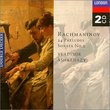| All Artists: Gustav Mahler, Leonard Bernstein, Concertgebouworkest Amsterdam, Helmut Wittek, Jaap van Zweden Title: Mahler: Symphony No. 4 Members Wishing: 0 Total Copies: 0 Label: Deutsche Grammophon Release Date: 10/25/1990 Genre: Classical Style: Symphonies Number of Discs: 1 SwapaCD Credits: 1 UPC: 028942360723 |
Search - Gustav Mahler, Leonard Bernstein, Concertgebouworkest Amsterdam :: Mahler: Symphony No. 4
 | Gustav Mahler, Leonard Bernstein, Concertgebouworkest Amsterdam Mahler: Symphony No. 4 Genre: Classical
Leonard Bernstein's earlier recording of this symphony for Sony was, and remains, one of the best. This new one, however, really is something special. As in his recording of the First with this orchestra, Bernstein's tem... more » |
CD DetailsSynopsis
Amazon.com essential recording Leonard Bernstein's earlier recording of this symphony for Sony was, and remains, one of the best. This new one, however, really is something special. As in his recording of the First with this orchestra, Bernstein's tempos have markedly speeded up, especially in the slow movement. He seems to have really discovered the secret of the music's essential innocence, and he now knows exactly when to make a point and when to just let the music speak naturally. The use of a boy soprano in the finale is unique but not unexpected. Mahler himself thought about it but opted for an adult soprano because he believed that this would prove less limiting to future performances of the work. He was right, of course, but so is Bernstein for letting us hear the composer's original thoughts in such a pure and enjoyable form. --David Hurwitz Similar CDs
Similarly Requested CDs
|
CD ReviewsThis is a "Must Have" recording Jeffrey Danowitz | Ramat Aviv, Tel Aviv Israel | 12/09/2004 (5 out of 5 stars) "I have listened to the Szell and the Abaddo performances of this symphony. I remember as a child being turned off by this performance. Now I am grown up! When I heard the boy soprano Wittek do the last movement, I had to stop my car on the side of the street and listen without moving. I was totally turned on by this performance. It is true that in other recordings the soprano (usually female) generally has a more operatic voice then this young boy. However, this performance is daring and took my breath away. The other movements (1-3) are equally brilliant. Bernstein makes this work into an absolute masterpiece. The Szell performance is also phenomenal. I would recommend getting both performances. The Szell is a wonderful performance, and this Bernstein performance is an emotional experience. I can understand why some people might find it hard to hear this performance with the boy singing the fourth movement. However, I think that an open mind will help these people realize what a brilliant idea it was to use this soprano. The whole experience was overwhelming for me." Simply delightful. Shota Hanai | Torrance, CA | 06/14/2004 (5 out of 5 stars) "I've already listened to both the Sony recording and the DG recording of Bernstein conducting Mahler's fourth, which is considered to be the most charming and the brightest of the symphonies. The Amsterdam Concertgebow Orchestra played with such delicacy, especially in the second movement, where the strings played their lushes melodies Bernstein could have really enjoyed singing. Also the tempo was slightly calmer and slower, "without haste", compared to the Sony recording with the New York Phil. As for using a boy soprano, as Mahler intended to signify innocence and childlike quality, I find it favorable for Helmut Wittek to sing the "descripton of heaven", even though I still prefer Reri Grist's more moving and sweet voice as recorded in the previous one. Each has their pros and cons, but it's just a minor thing. Overall, either is highly recommended." Worth it for the boy soprano alone. S. Summers | 02/23/2006 (5 out of 5 stars) "This is a pretty bright and spirited performance...I like it overall...but no matter who's version you prefer, buy it, run out and buy it if only for the last movement's boy soprano. It is hands down one of the most bone-chilling, hair-standing-on-end, tear-jerking, ethereal sounds you will ever fill your soul with. Ignore the person who wrote that Wittek was "struggling with intonation"--nitpicking at a very talented youngster is besides the point and does not do justice to the heart of the matter. We should be so lucky to hear a boy soprano--let alone an unnervingly musically mature one--as they are almost entirely an extinct art form. I have trouble hearing this one performed by mature singers now as I have been ruined by the sweetness, innocence, soul, and musicality of this performace. It's a breath of fresh air."
|

 Track Listings (4) - Disc #1
Track Listings (4) - Disc #1












